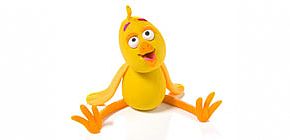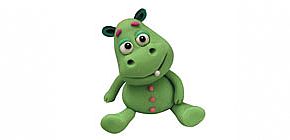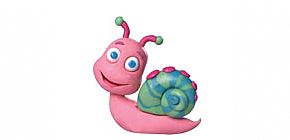Baby Teeth
A Tiny Drop (Tip Tipa) of Information on Teething and Taking Care of Baby Teeth
Teething is a welcome, yet complex developmental stage. The excitment over the first smile and flip is no indication of what is to be expected when it comes to the emergence of the first tooth, which is often accompanied by much suffering (for the infant) and loss of sleep (for the parents). 24 baby teeth appear between the age of 6 months and 3 years, as do a variety of side-effects. Here’s where you can learn how to relieve infant fever and pain associated with teething.
How to prepare for the first tooth - A complete guide
Your infant’s first teeth, aptly called “baby teeth,” are concealed within their gums from before they’re even born. The teething process, which begins around the six-month mark, is the first stage in which the tooth breaks through the gum and into the mouth. It is easy to understand why the teething process can cause infants quite a bit of suffering. It can be accompanied by gum pain and increased salivation, as the new tooth creates a small “wound” in the gum and exposes the inner tissue to bacteria residing in the mouth - which can sometimes lead to slight infections and fever between 6-10 months.
The teething process tends to culminate around the age of 2.5 years, and take place in the following order:
1. Bottom incisors
2. Top incisors
3. Lateral incisors and canines
4. Molars
Early signs of teething
The teething process can last several days at a time, is characterized by infant restlessness, crying attacks, increased salivation and a decrease in appetite. So, how do you identify infant teething? If you look into your infant’s mouth, so will notice that their gums are red, irritated and swollen. Later, you will notice a sharp, white protrusion coming out of the gum. Your infant will stuff various objects into their mouth, including their hands, and will attempt to “scratch” at their sore gums. A slight increase in temperature is common, appearing as the result of a minor infection at the site of the new tooth.
Early or late teething - What is and isn’t normal?
When referring to infant teething, there are no hard and fast rules. However, an early start to teething generally indicates that the process will continue in the near future. An infant who began teething early will also tend to replace those baby teeth with a permanent set at a younger age. And infants who began teething late, will also tend to lose their baby teeth and receive their adult teeth at an older age. Teething is a natural process and usually requires no intervention. But, should your infant’s Tipat Chalav (well baby check-up clinic) nurse identify late teething or a deviation from the normal teething order, your child may be referred to a dental clinic for a consultation.
Your infant’s behavior while teething
Infant teething is characterized by increased salivation, restlessness, red, swollen and inflamed gums, and an increased interest in placing their hands in their mouth to self-soothe. In more challenging cases, infants can struggle to sleep and suffer from a reduced appetite. These phenomena are not dangerous for the infant - but can be hard on parents who must cope with their infant’s restlessness and irritation.
Tooth eruption and treatment
Infant teething take place in the following way: The first tooth to erupt is generally one of the front bottom teeth, after which its “next door neighbor” emerges, followed by the top front pair. The rest of the teeth will gradually erupt by the child’s third birthday. Despite perhaps feeling that so few teeth do not need to be cared for, it is important to clean and care for baby teeth from the first eruption, as they will remain with your child for a few years and can develop plaque.
Signs you should head to a doctor or dentist
-
Yellow or black teeth
-
Scratched or bumpy teeth
-
Teething that takes place out of order, or one on top of another
What can you do to relieve fever and pain associated with teething?
There are several ways to cope with teething. Here are some tips that will help you calm the pain and fever your infant experiences while teething:
-
Gentle massage of the gums with your finger
-
Using infant-safe teething toys
-
Providing cold and calming foods, such as cucumbers, pears, watermelon, etc.
-
Relieving fever and pain with a paracetamol-based medication suitable for use from birth and presented in a concentrated amount that is easy to swallow
-
Note that teething creams and gels may contain substances that are unhealthy for infants, such as sugar and alcohol. Consult with your infant’s pediatrician before using these ointments.
Other articles on this subject:
Many infants suffer from runny noses in the days before a new tooth erupts, but studies show that there is no real connection between the two. So why do colds appear alongside teething and how do you deal with them? Everything you need to know, right here.
|
Does your infant have a fever? Are they irritable and without an appetite? Do they suffer from a diaper rash and lack of sleep? All these symptoms could be linked to teething, but they might not be. Here’s a complete guide to distinguishing normal teething in infants, from illnesses that require medical examination.
|
Like the first smile, steps and other wondrous moments, teething will accompany your little one’s first year, only with less pleasure. Many infants cry, scream and suffer from teething pain. Today, there’s no need to suffer in pain. There are effective ways to relieve infant teething pain and calm their suffering.
|
Your infant is drooling, spends lots of time stuffing their hands into their mouth, has no appetite and can’t sleep. Sounds like they could be suffering from teething pains. Read on to learn all the signs of teething, as well as those symptoms that do not actually indicate teething in infants.
|
In light of the development of several myths surrounding teething, including the “link” between teething and fever in infants, diarrhea, runny noses and more, were studied in multiple medical studies. Read on to discover the studies’ findings.
|


.jpg)
.jpg)
.jpg)
.jpg)



.jpg)
.jpg)
.jpg)
.jpg)

.jpg)
.jpg)
.jpg)
.jpg)
.jpg)

.jpg)
Contact us